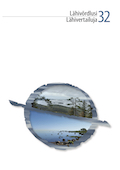Vierasta korostusta on niin vähän, että arvaan viro – Yleisten kielitutkintojen suomen kielen arvioijien käsityksiä suomenruotsalaisten puhumasta suomesta
There is so little foreign accent that I am guessing Estonian – The National Certificates Finnish raters’ perceptions of L1 Finland-Swedish speakers’ oral Finnish
Author(s): Sari Ohranen, Sari AholaSubject(s): Foreign languages learning, Phonetics / Phonology, Comparative Linguistics, Sociolinguistics, Finno-Ugrian studies
Published by: Eesti Rakenduslingvistika Ühing (ERÜ)
Keywords: language assessment; assessment criteria; L1 recognition; Swedishspeaking Finns as Finnish speakers; Estonians as Finnish speakers;
Summary/Abstract: This research studies the perceptions the National Certificates Finnish raters (N = 44) have on L1 Finland-Swedish speakers’ (N = 9) Finnish oral proficiency. The article also examines how the correct or incorrect recognition of the speakers’ L1 affects the raters’ assessments and perceptions of oral language skills. The data comes from the project ‘Broken Finnish’: Accent perceptions in societal gatekeeping in which Finland-Swedish speakers form one of the researched groups. The article examines L1 recognition and the use of the analytical criteria for assessment, by means of quantitative and qualitative data analysis. The qualitative data consist of the raters’ written comments on the speakers’ assumed L1 and of the reasons they give for their assumptions. These are analysed with data driven content analysis. The raters struggled to recognise the Finland-Swedish speakers of Finnish, only 18 % were recognised correctly. For some reason women (N = 5) were recognised somewhat better than men (N = 4). What is interesting, in 27 % of the incorrect recognition cases the speakers were assumed to have Estonian as their L1. Both the correct Finland-Swedish as L1 and the incorrect Estonian as L1 recognition had an effect on the ratings. Correctly recognized Finland-Swedish speakers got higher marks in every criterion than the unrecognised group. There was a similar trend when the raters assumed the speaker to be Estonian, except for pronunciation, which gave the speakers in this group lower marks than the correctly recognised Finland-Swedish and the unrecognised groups. When the raters commented on the speakers’ production, they paid attention especially to pronunciation, fluency, grammar, and to some external features that are not mentioned in the National Certificates’ assessment criteria. When the raters assumed that the speakers had Estonian as L1, they often mentioned a foreign accent or intonation, especially a rising word intonation. In Finnish the intonation is falling, and this is the case in Finland-Swedish as well. However, rising intonation, similar to that of Estonian, occurs in some Finland-Swedish dialects. The raters heard other similarities with Estonian as well, for example a palatalised l-sound and an unvoiced d-sound. The raters described the speakers’ fluency very similarly in both groups; the speech was natural, easy to understand, and even native-like. Grammatical errors that occurred were perceived as small slips. However, these slips caught the raters’ attention, and they were utilized to make assumptions about the speakers’ L1, as both Finland-Swedish and Estonian. As a feature external to the assessment criteria, the raters commented on the content of the speech. In speech performances, there were references to cultural phenomena that led the raters to assume that the speakers were Estonian or Finland-Swedish. Both groups in our study are considered to be very good Finnish learners and generally they do very well in the National Certificates’ Finnish test. In addition, there are some similar features of how Finland-Swedish and Estonian L1 speakers speak Finnish, and therefore it is understandable that the raters mix up the two groups.
Journal: Lähivőrdlusi. Lähivertailuja
- Issue Year: 2022
- Issue No: 32
- Page Range: 150-180
- Page Count: 31
- Language: Finnish

